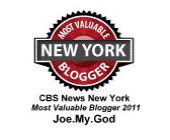Soul Train Was My First Gay Bar
My family moved to Orlando in 1971 when I was eleven years old and that presented me with a horrifying dilemma. You see, American Bandstand and Soul Train played in that market at the same time. It was only a thirty-minute overlap, but oh how that 1:00pm to 1:30pm period tortured me. There were no VCRs (much less YouTube), so any television moment you missed was often gone forever. So I'd kneel before our mammoth 25" Admiral floor set and jerk the dial compulsively between channels 2 and 9, usually prompting my mother to scream from another room, "If you break that thing, you'll answer to your father!"
American Bandstand was the "safer" of the two shows, of course, what with Dick Clark's bland interviewing style and the safe-for-school moves of the dancers. But very early on I began to realize that there was something about many of the male dancers on Soul Train. There was an undefinable otherness to their look, their moves, their carriage. I became fascinated with a handful of them, watching for them each week, tracking what they wore, their ever-changing dance partners. Dance partners who, not incidentally, were often introduced as sisters or cousins on the occasions that Don Cornelius asked for names.
I was in my late twenties when it finally dawned on me that during those early years of my Soul Train viewing I'd been hearing the very first and faint pings of a gaydar that would rarely fail me once I recognized it for what it was. Today, of course, the fact that the Soul Train dance floor was heavily populated by gay men is almost hilariously obvious. Just keep your antenna up while clicking through those muddy YouTube video transfers or when tuning into the reruns on cable. So thanks for that, Don Cornelius. As always in parting, I wish you love, peace, and soul.
RELATED: Until my voice changed, I could totally imitate that opening scream of "Soooooul Traaaaaaaaain." True story.
Labels: JMG, LGBT culture, nightlife, television










